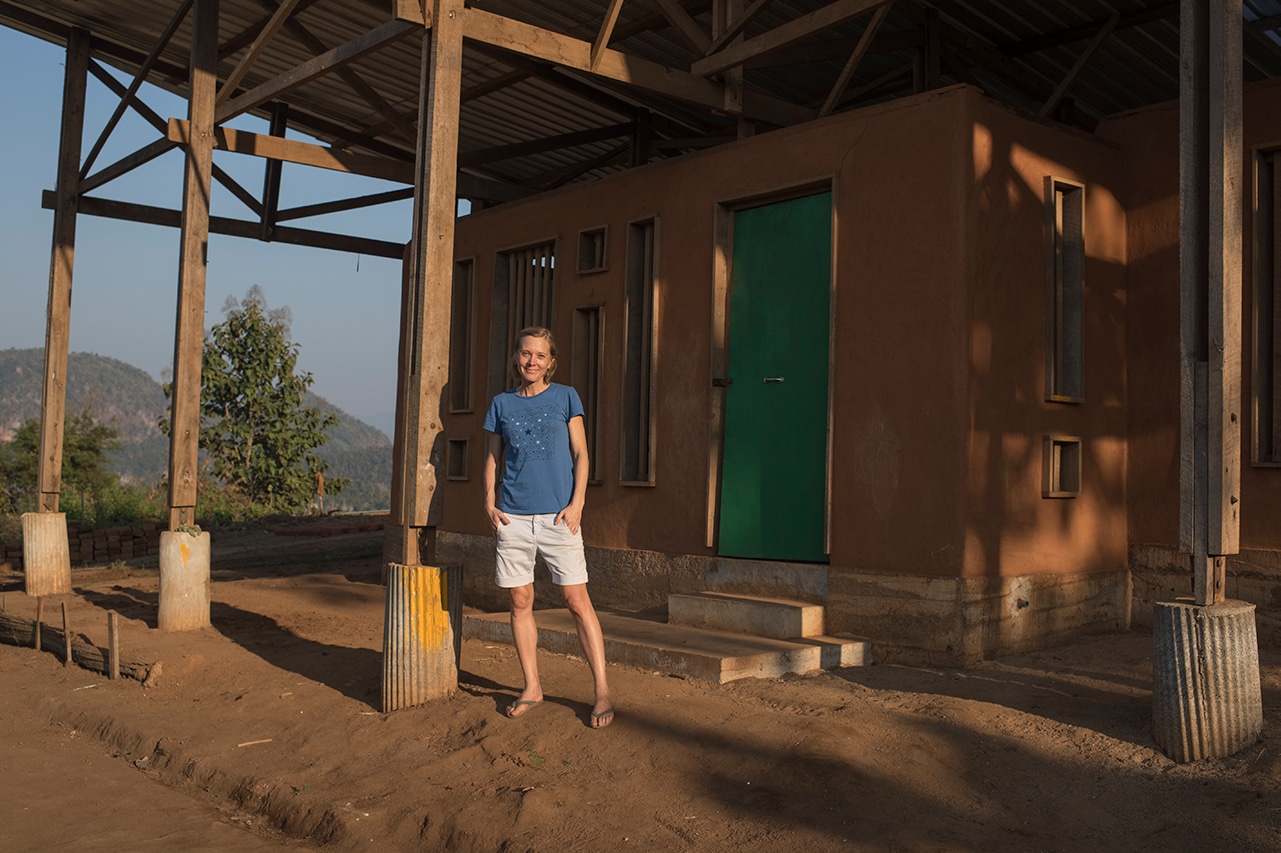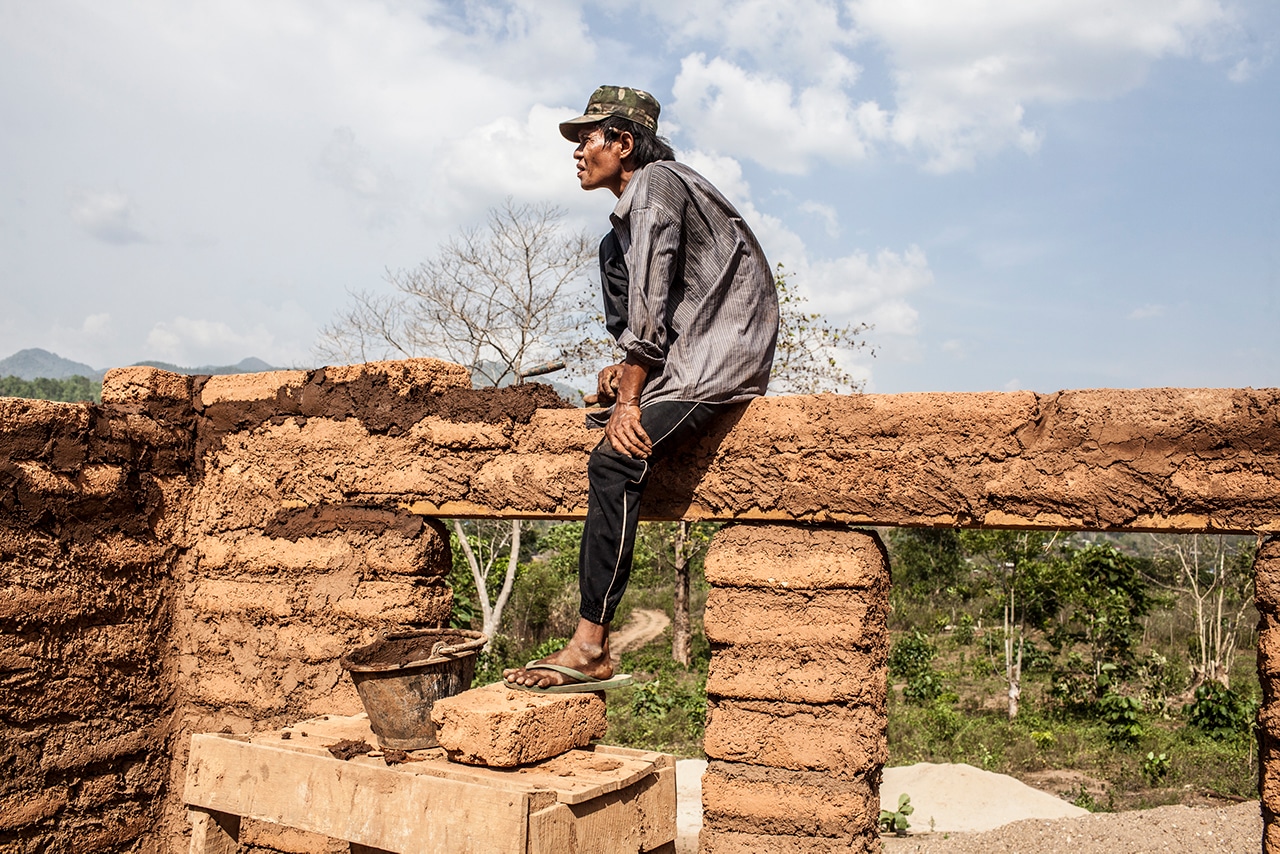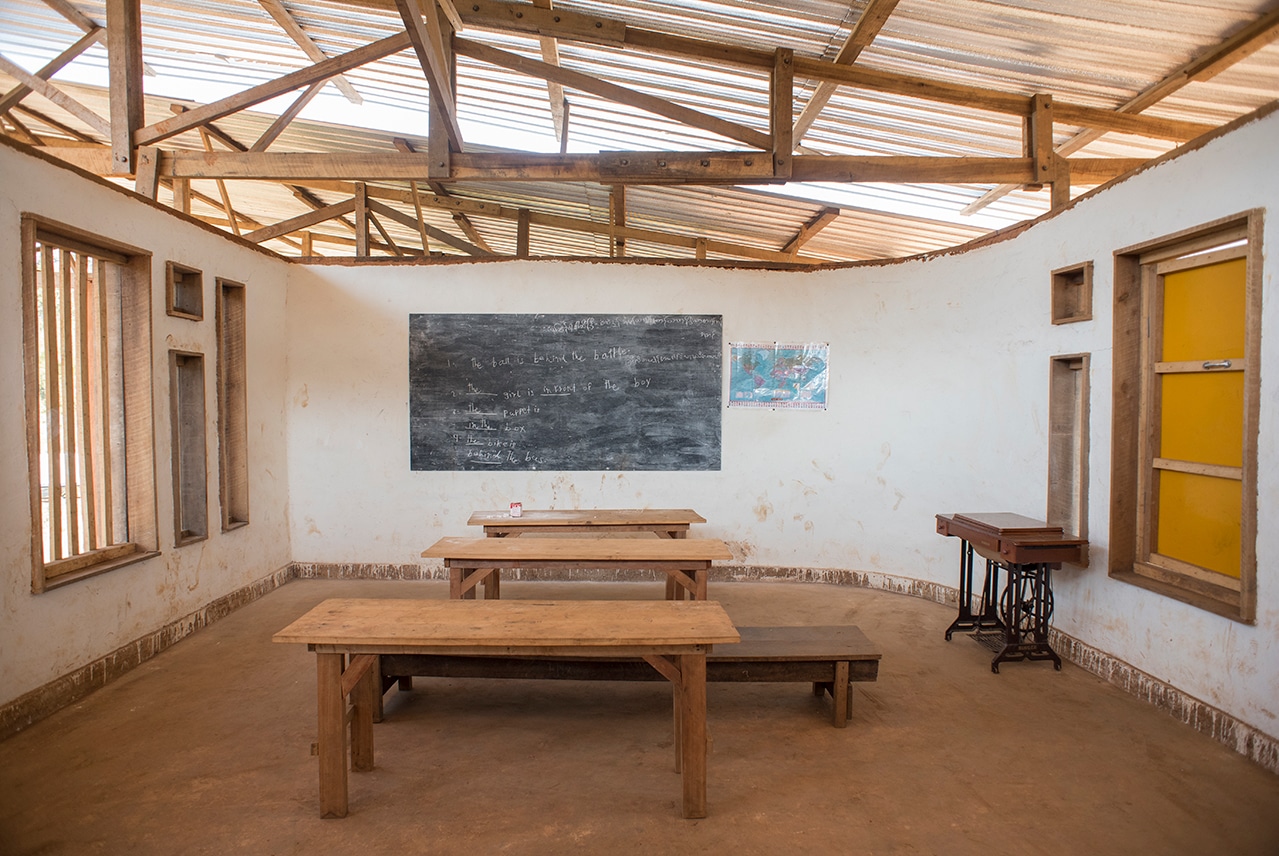
Gyaw Gyaw architect Line Ramstad in front of Gaw La Heh School [Photo: Vincenzo Floramo]
How sustainable architecture is educating refugees and migrants on the border between Thailand and Myanmar.
Every project has its challenges. When it comes to building a sustainable village, there’s a lot to consider—and we’re not talking about racking up points for LEED or other certifications.
For architect Line (pronounced LEE-nuh) Ramstad, building sustainably begins with considering—and respecting—the community you’re in. Ramstad is a Norwegian landscape architect who also has degrees in anthropology and geography. After five years of working in a private Norwegian architecture firm, she set out to explore how architecture could be used for positive development and ended up on a temporary architectural project on the border of Thailand and Myanmar (formerly Burma). There she met local carpenters, and they founded the organization Gyaw Gyaw—meaning “step by step” in the local language, Karen. “Since 2009 we have been building social buildings for and together with the local migrant community,” Ramstad says. Schools, dormitories, and even a health clinic make up just some of the structures that have enriched a roughly 30-mile jungle area on the border as part of Gyaw Gyaw’s work.
“With villagers we have completed more than 60 projects,” Ramstad says. About half are community projects like toilets, wells, fences, and water systems, while the rest are buildings. “Our main projects are all done with the future users involved, and they are adjusted to the landscape and local climate and with sustainability in a cultural, economic, and environmental matter as a base.”
Part of that economical sustainability means building using people, not machines. This provides local jobs while ensuring future users can easily replace parts and maintain the building. Minimizing long-term costs of a building is vital to long-term success. As for cultural sustainability, Ramstad emphasizes that the mission of Gyaw Gyaw is in no way to change the way people live. Instead, projects are adapted to the people who live there.

[Photo: Jonathan González]
Sustainable Building Methods
Gyaw Gyaw strives to use materials and solutions that won’t harm the environment, emphasizing local, renewable building materials to minimize transportation emissions as well as using as little concrete as possible. “Our building methods are locally adjusted to materials available, traditional techniques, climate, landscape, and use,” Ramstad says. “They are based on traditional living standards but designed for a more functional use, often leading to smaller buildings and less use of materials.”
For construction in the rainy season, the team makes a freestanding roof on a timber construction and uses premade adobe bricks on a concrete slab underneath. “In these cases, we are using more timber than if we would have used adobe as a load-bearing element, but it allows us to work all through the year,” Ramstad says. “Concrete is not in itself a sustainable material, but for foundation and slabs under adobe, concrete is so far our only option and is essential to avoid water and termites getting into the adobe from the ground. It makes it possible to make adobe in this area and increases the lifespan of the building. To improve its environmental footprint, we are using sand and gravel from local rivers and streams and bamboo as reinforcements in the slabs.”
Introducing adobe as a building material was one of the biggest steps, as the team locally produced the sun-dried earthen blocks. Compared to concrete, the most-used alternative to traditional timber and bamboo construction, adobe is both cheaper and more sustainable. “Thick adobe walls also keep inside temperatures more stable and, in combination with natural ventilation, the results are comfortable spaces, perfect for learning.”
Bamboo is also used for windows and walls, letting air and light through. Ramstad says bamboo depends on the season and locale; in this region it can last two to six years, so they use it where it can easily be replaced. “We also aim to lift local traditions; braided patterns normally used for baskets have become popular as windows and braided mats have become walls.”

Gaw La Heh School [Photo: Vincenzo Floramo]
Overcoming Challenges
Ramstad says the biggest challenge has been to promote change in a traditional society where critical discussions often don’t happen in public. “The combination of ‘don’t lose face’ and a strong hierarchy with implied respect for people above you creates situations where positions are more important than actual results,” she says. “In one way this keeps the small and informal societies along the border together, but it’s a challenge for human rights and democracy. Unfortunately aid workers and volunteers have the habit of exploiting this to their own benefit, leaving myself and others with a challenge to prove ourselves different and earn the trust needed to be able to contribute to a long-term positive change from the inside.”

Maw Kwee Primary School [Photo: Franc Pallarès López]
Working together as equals is crucial, and local collaborations are necessary for projects to succeed. Each project begins with the request from the school or institution itself, and Gyaw Gyaw follows up for years to make sure the project runs well, looking at everything from teachers’ pay and curriculum to cooperation between village and school and actual need. “Do they need a new building, or do they want it? If the last question is a want, we do not start the project,” Ramstad says. “This might seem harsh, but to build a building just for the sake of it does not lead to a good cooperation.”
Gyaw Gyaw has introduced new techniques and alternative uses of existing materials in small steps and in cooperation with village representatives and future users. The local connection and teamwork ensures money and knowledge go back into the community. “Look for ways to combine modern and traditional building patterns but always understand why people live like they do and consider the effect a change can have on people’s everyday life,” Ramstad says.
